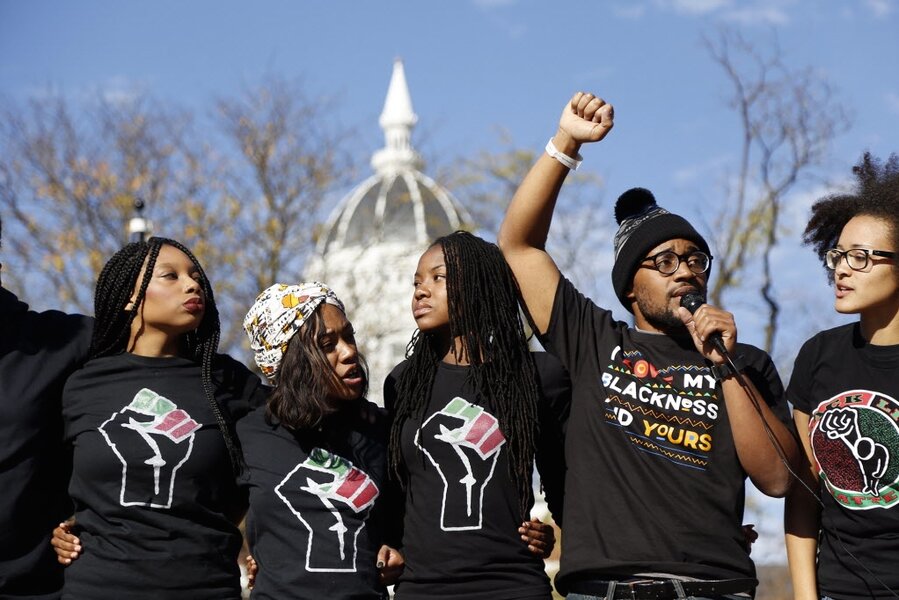What University of Missouri shows us about student activism
Loading...
University of Missouri President Tim Wolfe announced his resignation on Monday in an emotionally charged speech that brought to life the deep tensions between conservative and liberal views on race.
“The question is: why did we get to this really difficult situation? It’s my belief that we stopped listening to each other. We got frustrated with each other and we forced individuals like Jonathan Butler to take immediate steps to affect change,” Mr. Wolfe said in his speech. “This is not, I repeat, not the way change should come about. Change comes from listening, learning, caring, and conversation. We have to respect each other enough to stop yelling at each other and start listening. Unfortunately, this has not happened.”
Wolfe’s resignation is a major move for the 35,000 students at the University of Missouri – seven percent of which are African American – and not just because it signifies a deep-seeded racial problem that is plaguing America. It signifies what seems to be a revival era for student activists.
Or, at least, the first time students “won.”
Student activism on college campuses has been ongoing since the 1960s, when students marched in protest against the Vietnam War. In the 1980s, students protested over the Iran-Contra affair and apartheid in South Africa; in the 1990s, sweatshop labor and global warming. Many in the media have criticized the millennial generation for their political apathy, “colorblindness,” and self-obsession.
But the Missouri case has highlighted an important shift in student activism – students are not only still protesting, but the protests are affecting change. And it comes at a time when activism is, if anything, taking on new forms of life.
The movement against racial discrimination at the University of Missouri has been ongoing for weeks. Jonathan Butler, a graduate student, went on a weeklong hunger strike in the hopes that Wolfe would resign for his inaction against the “racist, sexist, homophobic, etc., incidents that have dynamically disrupted the learning experience.” But historically, rarely have student athletes been involved in student activism until the University of Missouri’s football team inserted itself into the conversation.
The Christian Science Monitor's Jessica Mendoza writes,
It points to a growing trend toward activism by student athletes, who in the past have tended to stay on the sidelines when it came to issues of social justice. And it comes amid a year of protests and national debate over race relations that some have likened to a new civil rights era.
The Missouri protest comes at the same time as students at Yale University recently cause a kerfuffle over appropriate Halloween costumes – students are accusing the administration of not being sensitive enough to concerns over culturally insensitive costumes. This is following a recent controversy where a male fraternity was accused of turning away a female student of color.





